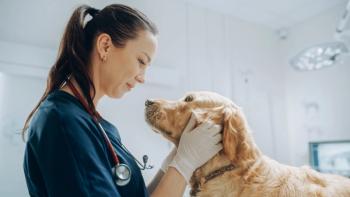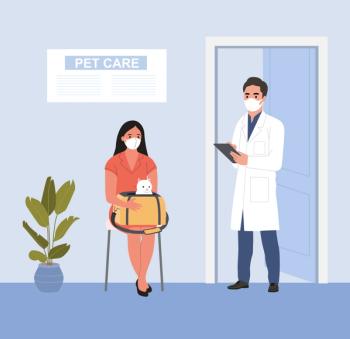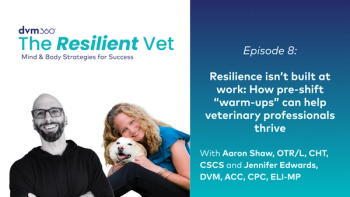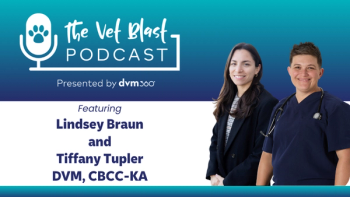
Dinner can wait
After arriving at the hospital and getting ready for the day, I noticed that my afternoon schedule was nearly blank. I had one appointment at the beginning and the end of the appointment block. I did not worry much; it was bound to get busier by mid-day with clients calling in requesting same-day appointments or emergencies.
After arriving at the hospital and getting ready for the day, I noticed that my afternoon schedule was nearly blank. I had one appointment at the beginning and the end of the appointment block. I did not worry much; it was bound to get busier by mid-day with clients calling in requesting same-day appointments or emergencies.
Yet by the time the afternoon block of appointments started, it was still mostly blank. After the first appointment, I went to the office for a granola bar. As I passed the checkout desk by the doctors' office, the receptionist said, "Did you see what I did to your afternoon?" Replying "no," she clicked the refresh button and there was a large block of purple taking up the formerly blank schedule. Purple denotes surgery. A possible c-section was on the way.
Mitzi was a Shih Tzu owned by an Amish man. After taking a history, it wasn't clear that this dog would need a c-section. The owner noticed her straining without giving birth, but he was not sure how long she had been in labor. It could have been a couple hours or it could have been all morning. Silently, I wished that he had been paying more attention. I certainly did not want to start a surgery unnecessarily.
A digital exam revealed that a puppy was just about to be born, likely on its own. I gave the mom-to-be a small amount of oxytocin and settled her in for observation. The owner and I agreed that if a puppy was not born in a reasonable amount of time, we would prep his dog for a c-section. Shortly thereafter, the first of five puppies was born on its own with no assistance required. With a c-section avoided, I sighed in relief, and waited for the next puppy.
Between the second and third puppy, the alert came from the reception desk that Dusty was on her way into the hospital, too. It was another Amish dog, this time a Labrador, also a possible c-section. Looking at the clock, it was nearly a quarter after three. Forty-five minutes to go until I was supposed to head back to Lititz to relieve my husband from puppy duty, allowing him to get a nap in before our dinner plans with friends that evening. However, as most practitioners know, veterinary medicine is never a 9-5 job. I sent a text message to my husband that I probably would be late.
When the Labrador walked in, she appeared bright and alert and although probably uncomfortable, she did not seem to be in distress. After going through all the same questions again, I realized quickly that this situation was much different than the first. There were six puppies already in a box filled with straw, crying loudly for their mother. The Amish client told me that all of those puppies must have been born in the middle of the night. The last puppy was born around 4 a.m., he thought.
The owner initially told me that he did not think he would bring the bitch in today. He had other things to do, including a chiropractic appointment with his wife. However, his wife convinced him to bring Dusty in the office. It must have been female instinct.
Examining the bitch, I could not feel a puppy in the birth canal. To be on the safe side, I had a radiograph taken. What I saw caused me to ask my technician to prepare surgical consent and hospitalization forms. There were at least three, maybe four, puppies still in the uterus. But there also was an odd opacity in the middle of the image, between the spines and skulls of the puppies. I could not place it, but at the time was not concerned that it was detrimental, only perplexed.
The c-section started just before 4 p.m. As I made my initial incision, I was irritated to find that it would be impossible to miss the very large superficial vessels. I used all the hemostats in the surgical pack and asked for more. After getting down to the body wall, I had a surgical field filled with hemostats pointing in various directions all over the drape.
I searched for the linea but could not find it. Finding no other feasible option, I opened the body wall off of the linea and found the uterus. The unfortunate part was that it was too large for the incision that I made. After extending the incision and trying again, I still was unable to remove the uterus.
Seeing our board-certified surgeon outside the surgical suite, I asked for help. I am not shy about asking for help when I need it, and this was one such case. She scrubbed in and switched sides of the surgery table with me. She extended the incision again and slowly started to remove the uterus. Just as she began to move the uterus, we heard a sickening hiss. I looked at her and said, "That's not good." I had never heard that sound before, but I knew it was not appropriate.
What we saw next was a large tear in the uterus, splitting the right horn almost completely. Escaping gas caused the hiss; the tear was exposed through the body wall. The uterus had ruptured during the day. If the owner had waited to bring the dog to us, it would have been a death sentence.
The puppy closest to the maimed portion of the uterus already was dead, but two more were removed alive. The board-certified surgeon stayed in the surgical suite with me, and we loosely closed the uterus to start the spay procedure. While I wish that I could spay every Amish dog that comes in for a c-section, that was not what the owner wanted. However, I tell every owner that if the uterus is not healthy, the dog will be spayed before we close her.
The spay procedure was difficult, and thankfully, the surgeon stayed to do it through closing the body wall. I assisted and spoke to the owner while a technician held the phone to my ear. Giving him a status update, we recommended a blood transfusion. Her intra-op PCV and total solids had fallen drastically, and she sustained significant blood loss. I expected him to refuse and possibly consider euthanization, so I was surprised when he consented to the transfusion.
I finished stapling the skin at just a few minutes before 6 p.m. Dusty was wheeled out of surgery and placed in an ICU kennel to recover and start the blood transfusion. I looked down to see my favorite pair of khakis ruined, both legs splattered with blood and amniotic fluid.
I called my husband and gave him a laundry list of things to bring with him to the restaurant, including a change of clothes, hairbrush and body spray. Ideally, I would have gone home, showered and changed for dinner. That was not happening with less than an hour before meeting our friends.
So often, my after-work plans change. Being able to adapt is vital in veterinary practice. This time, it required changing in a restaurant bathroom and trying to hide the lines left on my face from my surgery mask and cap. Luckily, I have a husband understands the demands of my profession.
All the same, I would not have traded that afternoon's surgery experience. Dusty recovered well, and by the next day, she was nursing her eight puppies. Seeing those black and yellow bodies huddled together was rewarding. I would go to dinner late a thousand times to have that feeling again.
Newsletter
From exam room tips to practice management insights, get trusted veterinary news delivered straight to your inbox—subscribe to dvm360.




